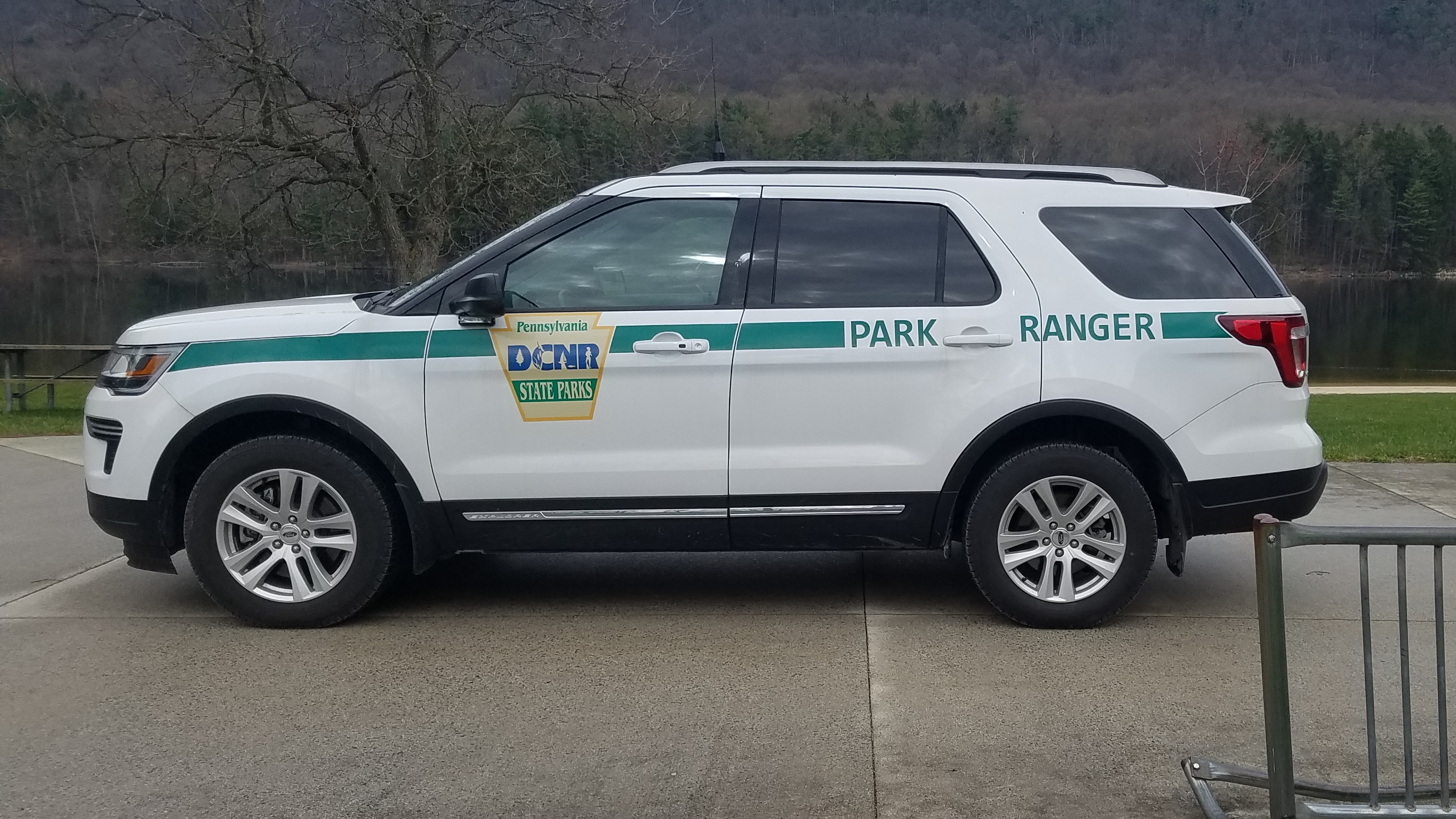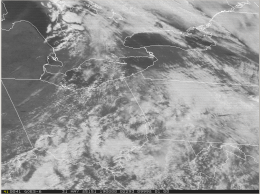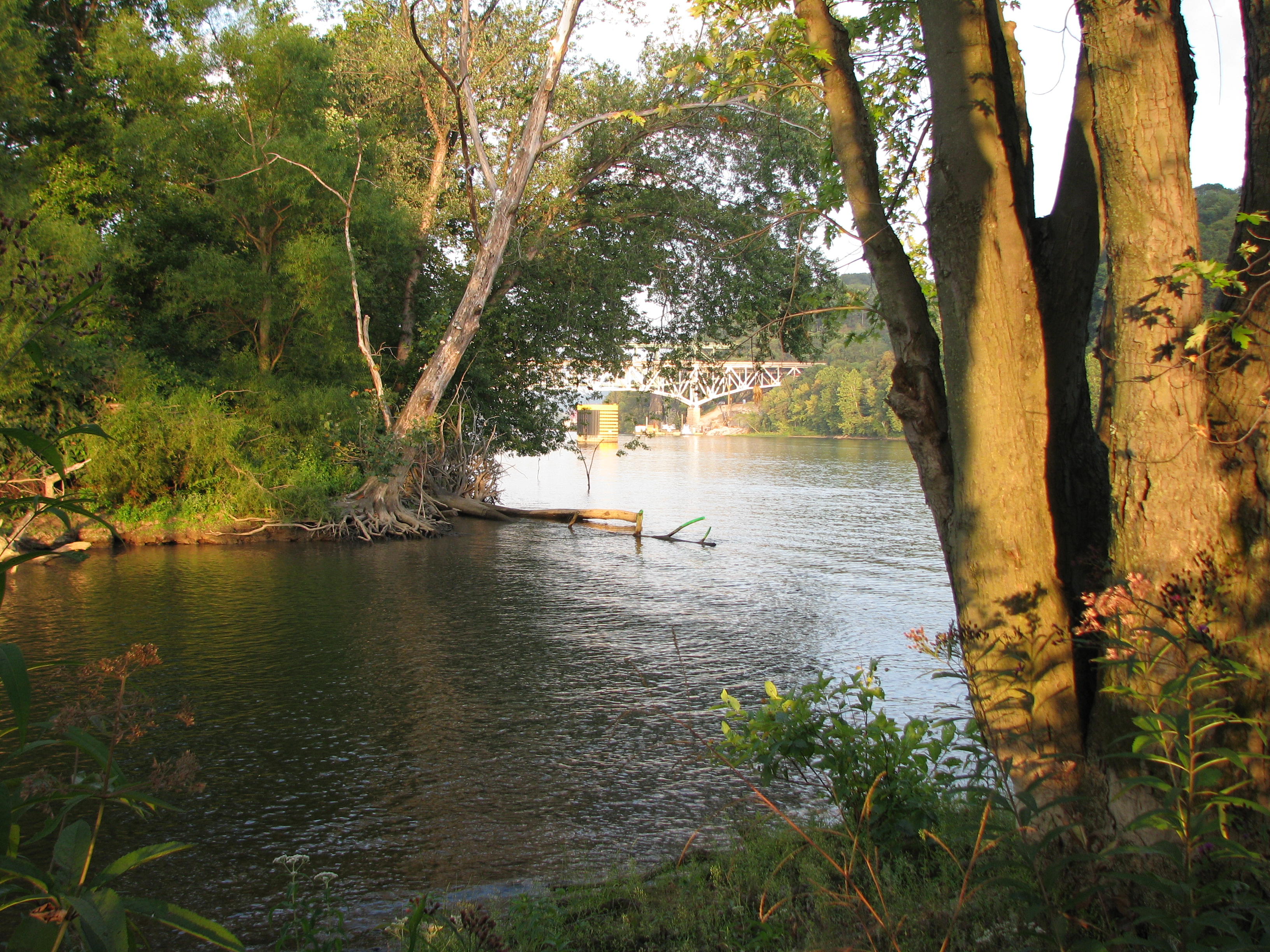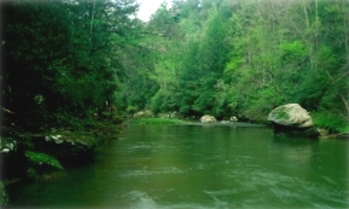|
Splash Dam
A splash dam was a temporary wooden dam used to raise the water level in streams to float logs downstream to sawmills. By impounding water and allowing it to be released on the log drive's schedule, these dams allowed many more logs to be brought to market than the natural flow of the creek allowed. Water releases from multiple splash dams on tributaries were also often combined to maximize the number of logs floated throughout a given watershed. Construction Splash dams were typically constructed of logs or boards, which formed cribs that were then filled with stones and earth. They could be anywhere from to several hundred feet wide, and were used from one to several years. A splash dam had to be sited on a section of the stream that allowed as large a body of water to accumulate behind the dam as possible. Behind the dam logs were transported to the creek and its banks, often along log slides. (No ISBN) The splash dam was equipped with a chute to allow water and logs to es ... [...More Info...] [...Related Items...] OR: [Wikipedia] [Google] [Baidu] |
Lycoming County, Pennsylvania
Lycoming County is a county in the Commonwealth of Pennsylvania. As of the 2020 census, the population was 114,188. Its county seat is Williamsport. Lycoming County comprises the Williamsport metropolitan statistical area. About northwest of Philadelphia and east-northeast of Pittsburgh, Lycoming is Pennsylvania's largest county by area. History Formation of the county Lycoming County was formed from Northumberland County on April 13, 1795. The county was larger than it is today. It took up most of the land that is now north central Pennsylvania. The following counties have been formed from land that was once part of Lycoming County: Armstrong, Bradford, Centre, Clearfield, Clinton, Indiana, Jefferson, McKean, Potter, Sullivan, Tioga, Venango, Warren, Forest, Elk and Cameron. Lycoming County was originally named Jefferson County in honor of Thomas Jefferson. This name proved to be unsatisfactory. The name change went through several steps. First a change to Lyco ... [...More Info...] [...Related Items...] OR: [Wikipedia] [Google] [Baidu] |
Board Feet
The board foot or board-foot is a unit of measurement for the volume of lumber in the United States and Canada. It equals the volume of a length of a board, one foot wide and thick. Board foot can be abbreviated as FBM (for "foot, board measure"), BDFT, or BF. A thousand board feet can be abbreviated as MFBM, MBFT, or MBF. Similarly, a million board feet can be abbreviated as MMFBM, MMBFT, or MMBF. Until 1970s in Australia and New Zealand the terms super foot and superficial foot were used with the same meaning. One board foot equals: * 1 ft × 1 ft × 1 in * 12 in × 12 in × 1 in * 144 in3 * 1/12 ft3 * ≈ * ≈ * ≈ or steres * 1/1980 Petrograd Standard of board The board foot is used to measure rough lumber (before drying and planing with no adjustments) or planed/surfaced lumber. An example of planed lumber is softwood 2 × 4 lumber sold by large lumber retailers. The 2 × 4 is actually only , but the dimensions for the lumber when purchased wholesa ... [...More Info...] [...Related Items...] OR: [Wikipedia] [Google] [Baidu] |
Pennsylvania Department Of Conservation And Natural Resources
The Pennsylvania Department of Conservation and Natural Resources (DCNR), established on July 1, 1995, is the agency in the U.S. State of Pennsylvania responsible for maintaining and preserving the state's 124 state parks and 20 state forests; providing information on the state's natural resources; and working with communities to benefit local recreation and natural areas. The agency has its headquarters in the Rachel Carson State Office Building in Harrisburg. The department was formed when then-governor Tom Ridge split the Department of Environmental Resources (DER) into the DCNR and Department of Environmental Protection (DEP). History Current Secretary of Conservation and Natural Resources * Cindy Adams Dunn (Appointed January 2015) Past Secretaries of Conservation and Natural Resources * Ellen Ferretti (Appointed September 2013) * John Quigley (Appointed April 2009) * Michael D. DiBerardinis (Appointed January 2003) * John C. Oliver (Appointed November 1995) Education ... [...More Info...] [...Related Items...] OR: [Wikipedia] [Google] [Baidu] |
McCalls Dam State Park
McCalls Dam State Park is a Pennsylvania state park on in Miles Township, Centre County, Pennsylvania in the United States. The park is in the easternmost tip of Centre County, south of Clinton County and north of Union County. McCalls Dam State Park is in a remote location on a gravel road between R. B. Winter State Park on Pennsylvania Route 192 and Eastville on Pennsylvania Route 880. The park can only be accessed in the winter months by snowmobiling or cross-country skiing. McCalls Dam State Park has a small camping area and a small picnic area with a few tables and charcoal grills. There are no modern restroom facilities at the park and visitors are asked to carry out all trash as there is no trash pick up at the park. The park is named for the splash dam that Johnny McCall built on White Deer Creek in 1850. He used the waters that flowed from the dam to power a sawmill. Sixteen years later the dam was rebuilt to provide water for a series of splash dams that were ... [...More Info...] [...Related Items...] OR: [Wikipedia] [Google] [Baidu] |
Parker Dam State Park
Parker Dam State Park is a Pennsylvania state park in Huston Township, Clearfield County, Pennsylvania in the United States. The park is surrounded by Moshannon State Forest. Parker Dam State park is north of Clearfield on Pennsylvania Route 153 just off exit 111 of Interstate 80. The park was constructed during the Great Depression by the Civilian Conservation Corps; they built many of the facilities that are in use today at Parker Dam State Park. History The park takes its name from William Parker, who leased lumbering rights from John Otto. Parker built a splash dam on Laurel Run at the site of the present lake. Lumbering began as early as 1794 in Clearfield County, harvesting the white pine and hemlock which covered the mountainsides. The tall white pines fetched a high price in Baltimore for use as masts. Logs were to Baltimore by way of the Susquehanna River. Logging picked up in force during the 1850s when the Susquehanna Boom was built across the West Branch Susqueh ... [...More Info...] [...Related Items...] OR: [Wikipedia] [Google] [Baidu] |
List Of Pennsylvania State Parks
There are 124 state parks in the U.S. state of Pennsylvania . The Pennsylvania Bureau of State Parks, a division of the Pennsylvania Department of Conservation and Natural Resources (DCNR), is the governing body for all these parks, and directly operates 116 of them. The remaining eight are operated in cooperation with other public and private organizations. The first Pennsylvania state park, at Valley Forge, opened in 1893 and was given to the National Park Service (NPS) for America's bicentennial in 1976. There are a total of seventeen former Pennsylvania state parks: four former parks have been transferred to the NPS, four to the Pennsylvania Historical Museum Commission, two to the U.S. Army Corps of Engineers, one to both the Corps and the Pennsylvania Game Commission, five to the Pennsylvania Bureau of Forestry, and one has ceased to exist. Nine current and two former state parks have had major name changes or have been known under alternate names. The list gives a ... [...More Info...] [...Related Items...] OR: [Wikipedia] [Google] [Baidu] |
Geographic Names Information System
The Geographic Names Information System (GNIS) is a database of name and locative information about more than two million physical and cultural features throughout the United States and its territories, Antarctica, and the associated states of the Marshall Islands, Federated States of Micronesia, and Palau. It is a type of gazetteer. It was developed by the United States Geological Survey (USGS) in cooperation with the United States Board on Geographic Names (BGN) to promote the standardization of feature names. Data were collected in two phases. Although a third phase was considered, which would have handled name changes where local usages differed from maps, it was never begun. The database is part of a system that includes topographic map names and bibliographic references. The names of books and historic maps that confirm the feature or place name are cited. Variant names, alternatives to official federal names for a feature, are also recorded. Each feature receives ... [...More Info...] [...Related Items...] OR: [Wikipedia] [Google] [Baidu] |
United States Geological Survey
The United States Geological Survey (USGS), formerly simply known as the Geological Survey, is a scientific agency of the United States government. The scientists of the USGS study the landscape of the United States, its natural resources, and the natural hazards that threaten it. The organization's work spans the disciplines of biology, geography, geology, and hydrology. The USGS is a fact-finding research organization with no regulatory responsibility. The agency was founded on March 3, 1879. The USGS is a bureau of the United States Department of the Interior; it is that department's sole scientific agency. The USGS employs approximately 8,670 people and is headquartered in Reston, Virginia. The USGS also has major offices near Lakewood, Colorado, at the Denver Federal Center, and Menlo Park, California. The current motto of the USGS, in use since August 1997, is "science for a changing world". The agency's previous slogan, adopted on the occasion of its hundredth an ... [...More Info...] [...Related Items...] OR: [Wikipedia] [Google] [Baidu] |
Dam For Flooding Logs, L
A dam is a barrier that stops or restricts the flow of surface water or underground streams. Reservoirs created by dams not only suppress floods but also provide water for activities such as irrigation, human consumption, industrial use, aquaculture, and navigability. Hydropower is often used in conjunction with dams to generate electricity. A dam can also be used to collect or store water which can be evenly distributed between locations. Dams generally serve the primary purpose of retaining water, while other structures such as floodgates or levees (also known as dikes) are used to manage or prevent water flow into specific land regions. The earliest known dam is the Jawa Dam in Jordan, dating to 3,000 BC. The word ''dam'' can be traced back to Middle English, and before that, from Middle Dutch, as seen in the names of many old cities, such as Amsterdam and Rotterdam. History Ancient dams Early dam building took place in Mesopotamia and the Middle East. Dams were used ... [...More Info...] [...Related Items...] OR: [Wikipedia] [Google] [Baidu] |
Photograph Of A Dam For Making Freshet For Floating Logs In Northern Michigan - NARA - 2129578
A photograph (also known as a photo, image, or picture) is an image created by light falling on a photosensitive surface, usually photographic film or an electronic image sensor, such as a CCD or a CMOS chip. Most photographs are now created using a smartphone/camera, which uses a lens to focus the scene's visible wavelengths of light into a reproduction of what the human eye would see. The process and practice of creating such images is called photography. Etymology The word ''photograph'' was coined in 1839 by Sir John Herschel and is based on the Greek φῶς (''phos''), meaning "light," and γραφή (''graphê''), meaning "drawing, writing," together meaning "drawing with light." History The first permanent photograph, a contact-exposed copy of an engraving, was made in 1822 using the bitumen-based "heliography" process developed by Nicéphore Niépce. The first photographs of a real-world scene, made using a camera obscura, followed a few years later at Le Gras, F ... [...More Info...] [...Related Items...] OR: [Wikipedia] [Google] [Baidu] |
Kentucky
Kentucky ( , ), officially the Commonwealth of Kentucky, is a state in the Southeastern region of the United States and one of the states of the Upper South. It borders Illinois, Indiana, and Ohio to the north; West Virginia and Virginia to the east; Tennessee to the south; and Missouri to the west. Its northern border is defined by the Ohio River. Its capital is Frankfort, Kentucky, Frankfort, and its two largest cities are Louisville, Kentucky, Louisville and Lexington, Kentucky, Lexington. Its population was approximately 4.5 million in 2020. Kentucky was admitted into the Union as the 15th state on June 1, 1792, Kentucky County, Virginia, splitting from Virginia in the process. It is known as the "Bluegrass State", a nickname based on Kentucky bluegrass, a species of green grass found in many of its pastures, which has supported the thoroughbred horse industry in the center of the state. Historically, it was known for excellent farming conditions for this reason and ... [...More Info...] [...Related Items...] OR: [Wikipedia] [Google] [Baidu] |
Red River (Kentucky)
The Red River is a U.S. Geological Survey. National Hydrography Dataset high-resolution flowline dataThe National Map accessed June 13, 2011 tributary of the Kentucky River in east-central Kentucky in the United States. Via the Kentucky and Ohio rivers, it is part of the Mississippi River watershed. It rises in the mountainous region of the Cumberland Plateau, in eastern Wolfe County, approximately east of Campton. It flows generally west, through Red River Gorge in the Daniel Boone National Forest, then past Stanton and Clay City. It joins the Kentucky approximately southeast of Winchester. In 1993, a stretch of the river in the Red River Gorge was designated by the federal government as a National Wild and Scenic River. The book ''The Unforeseen Wilderness'' by Wendell Berry was written to deter the Army Corps of Engineers from damming the Red River Gorge in 1971. Recreation The largest golden redhorse ever taken in Kentucky (4 lbs., 5 oz.) was taken in the Re ... [...More Info...] [...Related Items...] OR: [Wikipedia] [Google] [Baidu] |








